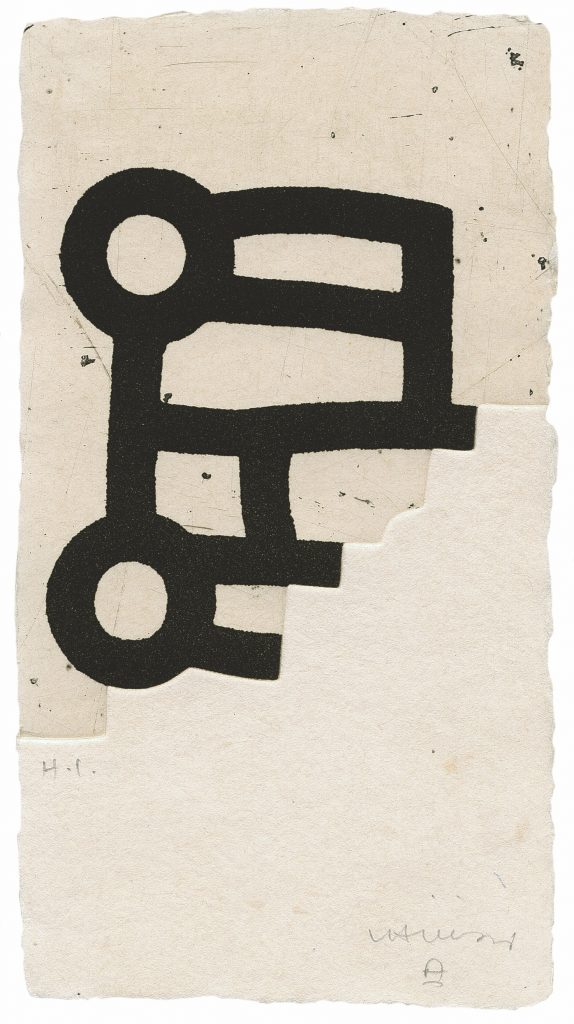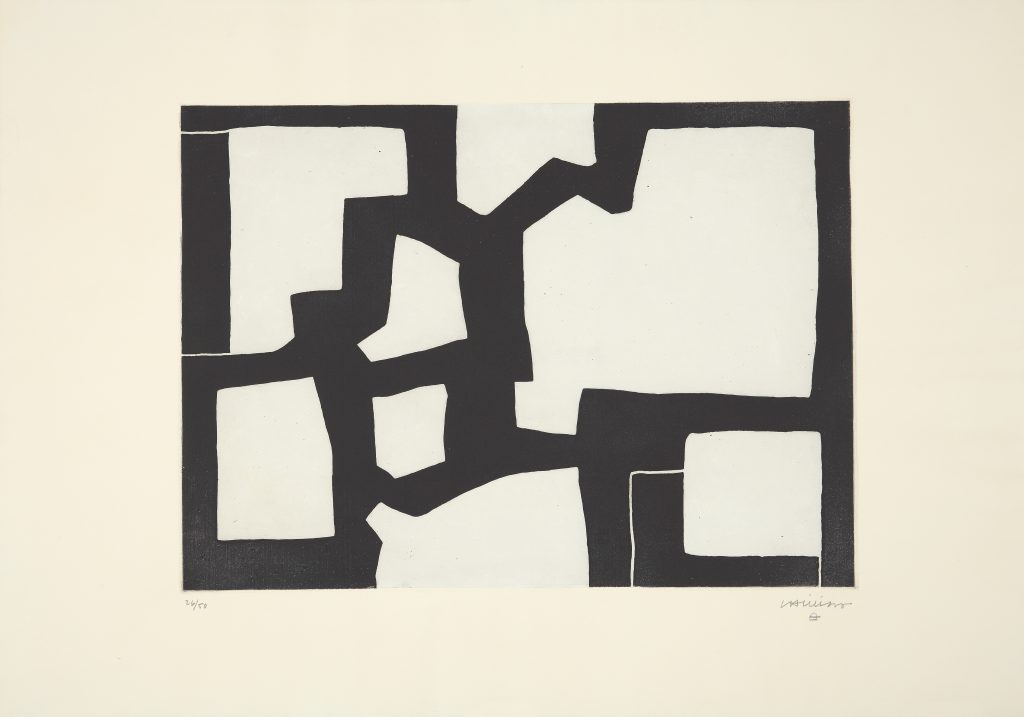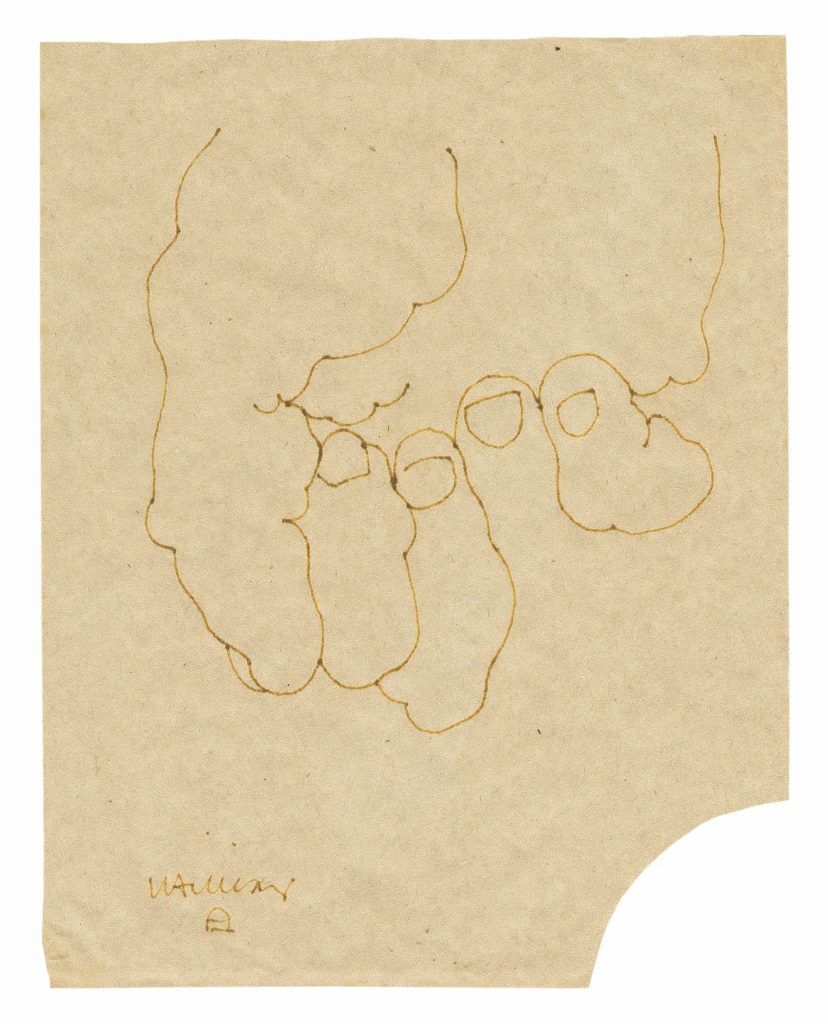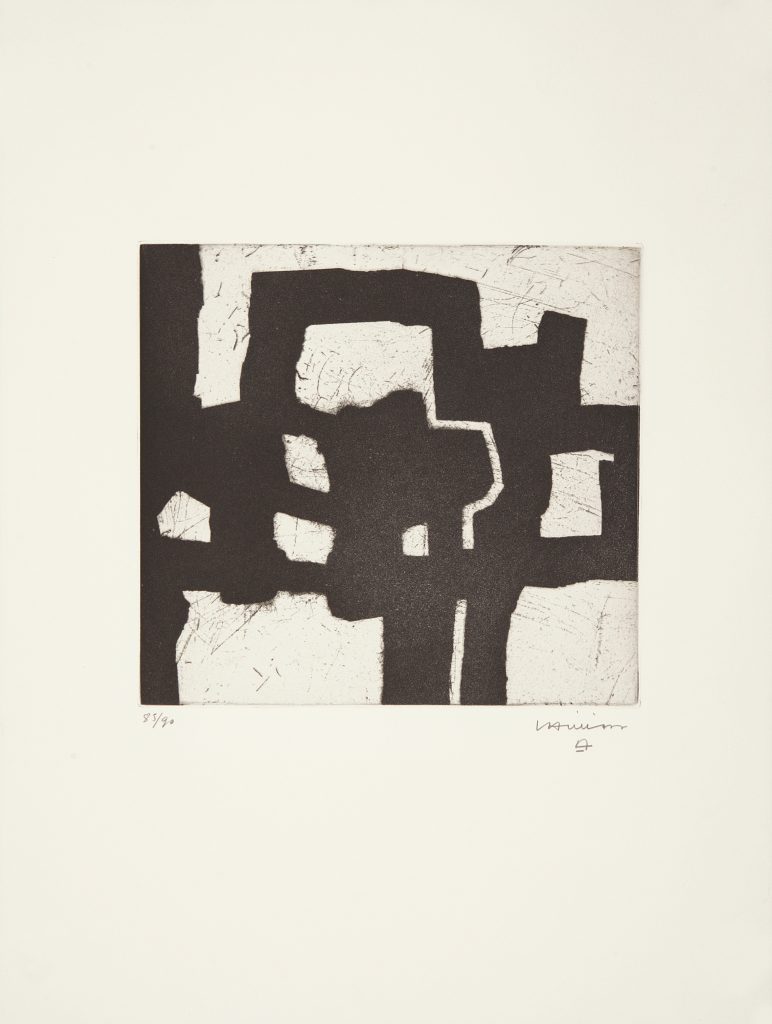Gallery Network
Who Was Eduardo Chillida? A Look at the Celebrated Spanish Artist Born 100 Years Ago
Presented by Galerie Boisserée in Cologne, a new exhibition explores Chillida's achievements in printmaking.

Presented by Galerie Boisserée in Cologne, a new exhibition explores Chillida's achievements in printmaking.

Artnet Gallery Network

Every month, hundreds of galleries add newly available works by thousands of artists to the Artnet Gallery Network—and every week, we shine a spotlight on one artist or exhibition you should know. Check out what we have in store, and inquire for more with one simple click.
What You Need to Know: Celebrating the 100th anniversary of the artist’s birth, Galerie Boisserée in Cologne, Germany, is presenting the solo exhibition “Eduardo Chillida: Selected works on paper and from the graphic oeuvre.” On view through July 20, 2024, the show includes print works dating from between 1962 and 2000, as well as a selection of unique works on paper and terracotta sculptures. Together, the works on view allow viewers to trace the distinctive artistic trajectory and evolution of Chillida, and glimpse the extensive collection of prints by the artist that the gallery has meticulously built. The exhibition is also accompanied by a fully illustrated, 132-page catalogue, which can also be accessed virtually.

Eduardo Chillida, “Inguru V” (Ringsum V) (1968). Courtesy of Galerie Boisserée, Cologne.
About the Artist: Spanish artist Eduardo Chillida (1924–2002) initially studied architecture at the University of Madrid in the mid-1940s but ultimately left the practice in favor of pursuing art formally—though the influence of architecture can be seen in much of his work. Although he lived in France from 1948 to 1955, he ultimately returned to the region of his birth where he remained until his death. His early career saw him working with plaster and clay but soon moved on to work with forged iron, working closely with the foundry and metalworkers to bring his works to life rather than creating studies or small maquettes to have made by others. Recognized for his large-scale, abstract sculptures, which have been installed in public spaces internationally. Some of his most important public works include in front of the Meyerson Symphony Center, Dallas, which was designed by I.M. Pei; a tribute to Johann Wolfgang von Goethe in Frankfurt, Germany; and the World Bank Headquarters, Washington, D.C.

Eduardo Chillida, Untitled (1985). Courtesy of Galerie Boisserée, Cologne.
Why We Like It: While Chillida may be widely recognized for his monumental sculptures, his works on paper offer a unique vantage into his creative process, and more specifically his explorations of space. Abstract and devoid of any perspectival elements, the graphic compositions reference the themes Chillida engaged with throughout his career such as rhythm, musicality, as well as philosophy. He was personally well acquainted with philosopher Martin Heidegger, whom he had fruitful philosophical conversations with, and cited composer Johann Sebastian Bach and polymath Omar Khayyam as influences. Though unyielding and finite in their execution, Chillida’s lithe use of black pigment and line evokes a fluidity and gracefulness that arguably even surpasses what he was able to achieve with his sculptural works.

Eduardo Chillida, “Homenaje a Picasso” (Hommage an Picasso) (1972). Courtesy of Galerie Boisserée, Cologne.
“Eduardo Chillida: Selected Works on Paper and From the Graphic Oeuvre” is on view at Galerie Boisserée, Cologne, through July 20, 2024.
